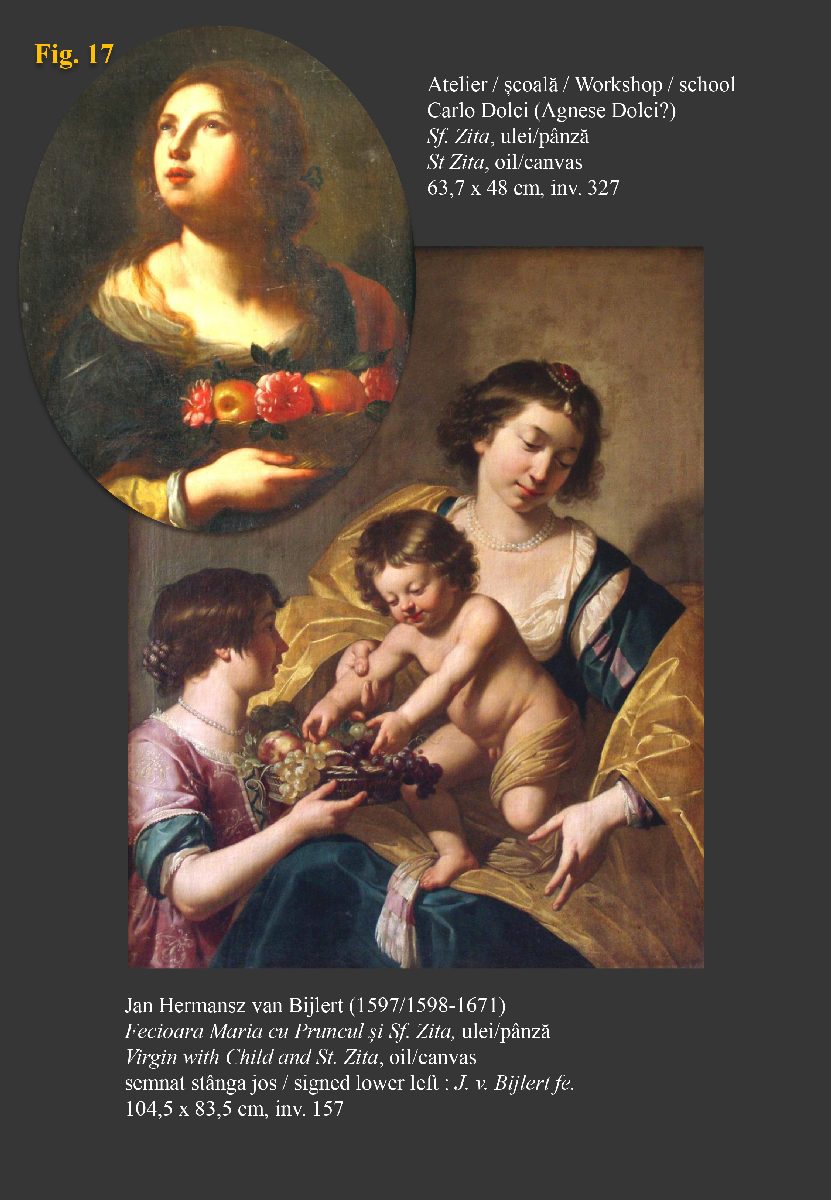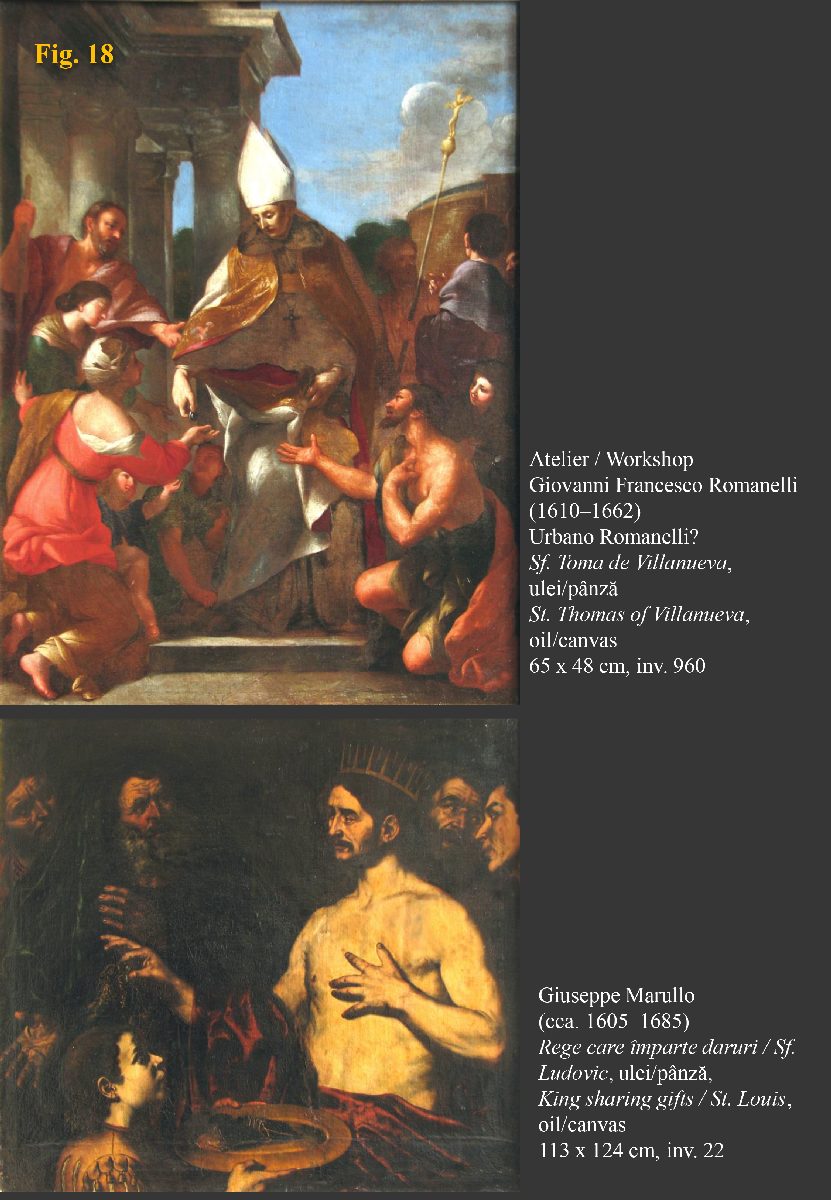Part 6: Charitable saints
Charity (Latin caritas, Greek agape) is one of the 7 Christian virtues and one of the 3 theological virtues, being defined by love for fellow humans and voluntary, selfless generosity.
St. Zita (ca. 1212–1272), the patron saint of servants, is represented in two works from the museum's collection (Fig. 17).
In the painting Virgin Mary with Child and Saint Zita, by Jan Hermansz van Bijlert (1597/1598-1671), the saint can be identified both by the basket of fruit (one of her attributes) and by the posture as servant to Mary who is illustrated in aristocratic garments and adornments.
Lacking the hieratic approach of religious painting, this composition is specific to a form of devotio moderna, bringing the religious scene into contemporaneity; the integration of the patrons in the composition, as characters of the religious narrative, suggests the following of the saints’ model in the personal devotion of the believer. In the work by the workshop or school of Carlo Dolci (1616–1686), a possible author could be the very daughter of the painter – Agnese Dolci, according to A. Sonoc, St. Zita is rendered holding a basket of peaches and roses, suggesting to her habit of sharing food to the poor and to the miracle of roses (caught while living the house with a cloak laden with loaves for the poor, the loaves turned into roses).
Attributed to the workshop of Giovanni Francesco Romanelli (1610–1662), respectively the painter's son, Urbano Romanelli (ca. 1645–1682), St. Thomas of Villanueva (Fig. 18), of the Order of St. Augustine, Archbishop of Valencia, is represented distributing money to the poor; the character was identified by A. Sonoc based on the costume (episcopal vestments and archbishop’s crozier) and the architectural context in the background (Church of the Invalides and a wing of the cathedral of Valencia).
In the work King distributing gifts by Giuseppe Marullo (ca. 1605–1685), A. Sonoc identified the representation of St. Louis (Fig. 18), king of France under the name of Louis IX (1226–1270); he participated in the 7th and 8th Crusades, selling even his expensive ceremonial garments in order to be able to buy, in 1238, from the Latin emperor of Constantinople, Baldwin II (1228–1261), one of the most precious relics of Christianity – the Crown of Thorns. Brought in France to be venerated, the crown is the expression of his special piety and his charity towards the faithful.
Click an image below to open it



